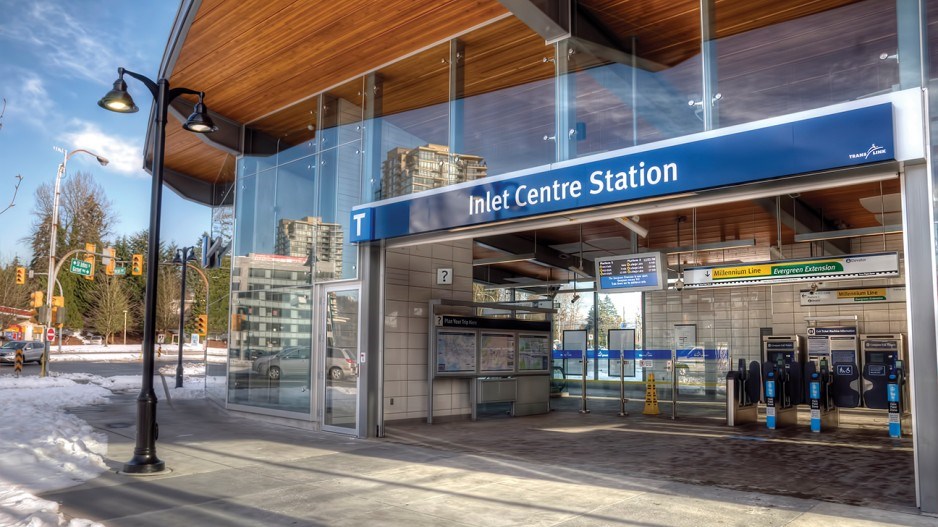Rivers and waterways were once the backbone of human settlement, but highways and rail lines have replaced them in an age of motor transport.
While the Fraser River remains the dominating geographical feature of the Lower Mainland, with Vancouver, Burnaby, New Westminster and Richmond clustered around its southern arms, and the north Fraser communities of Pitt Meadows, Maple Ridge and Mission reaching into the Fraser Valley, the growth is being made possible by investments in rapid transit.
The prospect of a western extension of the Millennium Line is fuelling densification of the Broadway corridor in Vancouver, while the Evergreen Extension has opened the region’s northeastern corner to fresh development.
Recent figures from the Canada Mortgage and Housing Corp. (CMHC) point to the most intensive development happening in three key areas: Surrey, New Westminster and the Tri-Cities.
Housing starts in Surrey in the first seven months of this year totalled 1,297, the most of any municipality in the region and a 66% increase from a year earlier. New Westminster claimed the second-highest number of starts, at 420 units, up 59%. Meanwhile, Port Coquitlam logged 279 starts, three times last year’s number.
These added to the number of homes already under construction in these municipalities. Surrey had 5,385 units under construction in the first seven months of 2017, up 28% from a year earlier, followed by New Westminster at 2,413 units (up 71%), and the Tri-Cities area reported 3,029 units under construction, a 33% increase from the previous year.
Burnaby led the charge in terms of units under construction at 6,679 units – a figure that trounced the previous record of 3,681.
“Ultimately, what we’re seeing are these large projects around transit stations,” explained Keith Stewart, a senior market analyst with CMHC.
Yet if transit is a fundamental element, it isn’t the only thread to the story. Rather, it’s a key to what many of these municipalities have to offer.
A report by credit union Vancity earlier this year pointed to the affordability of many municipalities surrounding Vancouver. This affordability has, in turn, drawn buyers and pushed up prices even as builders took advantage of development opportunities.
“The high cost of housing in the region’s core has sent many people further afield in search of affordable options,” the Vancity report stated. “The quest for affordable housing has created an influx of buyers into Burnaby, Surrey and Langley city and township, with prices rising in step with demand.”
The report singled out New Westminster as the only municipality where the typical home required less than 30% of median household income, but that affordability had fallen 14% over the study period. Coquitlam, the first stop on the newly opened Evergreen Extension, was more accessible than ever – and affordability had dropped 6.7%.
To meet the demand, which has left fewer than a dozen units available for pre-sale in the Tri-Cities and minimal standing inventory, developers have shown a keen appetite for land.
According to Colliers International, a “well-connected transit system” is supporting developer interest, particularly in areas adjacent to existing town centre malls such as Brentwood and Lougheed, both of which are subject to high-density redevelopment projects. Indeed, Avison Young principal Mehdi Shokri recently announced an off-market purchase of 8.3 acres across seven parcels near Brentwood for $155 million – the largest residential land transaction ever to occur in Burnaby.
Similarly, transit development in the Tri-Cities has spurred interest in older quarters of Coquitlam and Port Moody where municipal policies are being drafted to accommodate the anticipated growth.
“The red-hot development market surrounding stations of the Evergreen line has not shown signs of cooling and market activity here is expected to continue in the short to medium term,” Colliers reported.
It’s not just more affordable land economics but the kind of development transit lines tend to attract that help make such projects attractive to buyers, explained Michael Ferreira, principal of Urban Analytics Inc.
Transit lines need ridership, and high-density developments put riders where the tracks are. High-density projects also mean better use of land, so per-unit housing costs are less than for a house and a yard.
“Historically, wherever we’ve seen rapid transit developed in Metro Vancouver, we’ve seen an increase in new development along the corridors and [in] particular around stations,” Ferreira said. “The form of housing is going to be more affordable; a condominium will be more affordable than a single-family home.”




